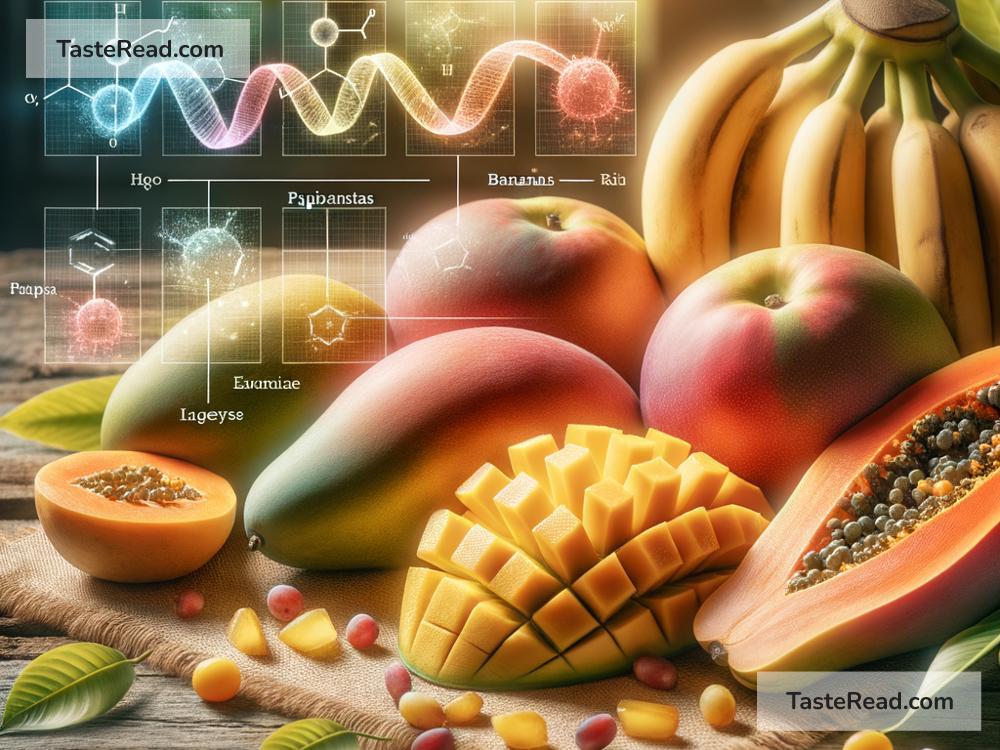How Enzymes Influence the Sweetness of Fruits During Ripening
If you’ve ever bitten into a juicy, perfectly ripe mango or a sweet banana, you’ve experienced the magic of fruit ripening. But have you ever wondered what makes fruits sweet when they ripen? The answer lies in tiny biological helpers called enzymes. These microscopic workers play a key role in transforming immature, sour fruits into sweet, delicious treats. Let’s dive in to understand how enzymes influence the sweetness of fruits during ripening, explained in simple terms.
What Are Enzymes?
Before we jump into fruit ripening, let’s first understand enzymes. Enzymes are specialized proteins that speed up chemical reactions in living organisms. They act like catalysts, meaning they trigger processes without being consumed themselves. Think of enzymes as the workers in a factory that turn raw materials into finished goods—they keep the fruit’s biological machinery running smoothly.
What Happens During Fruit Ripening?
When fruits are unripe, they’re often hard, sour, and green. These characteristics help protect the fruit from being eaten earlier than it should, allowing the seeds inside to develop fully. As fruits ripen, several changes take place:
- Color Change: Fruits turn from green to more vibrant colors like yellow, orange, or red. This signals to animals that the fruit is ready to be eaten.
- Texture Change: Fruits go from hard to soft, making them easier to chew and digest.
- Flavor Change: The sourness decreases, and the sweetness increases. This is where enzymes play a starring role!
The Role of Enzymes in Sweetness
Let’s focus on why fruits become sweeter during ripening. This process is largely driven by enzymes that break down starches and transform them into sugars.
- Starch Breakdown
When fruits are unripe, they have a lot of starch. Starch is a complex carbohydrate made up of long chains of sugar molecules. On its own, starch isn’t sweet—it’s bland. As the fruit ripens, enzymes called amylases step in.
Amylases break down starch into simpler sugars like glucose and fructose. These small sugar molecules taste sweet, giving ripe fruit its appealing flavor. The more amylases work to break down starch, the sweeter the fruit becomes.
For example, take a banana. When it’s green and unripe, it’s starchy and not very sweet. As it ripens, the starch is broken down into sugars, and the banana becomes deliciously sweet.
- Sugar Production and Balancing
Another set of enzymes helps regulate sugar levels during ripening. For example, invertase is an enzyme that splits the natural sugar sucrose into two simpler sugars: glucose and fructose. These sugars are sweeter than sucrose on its own, which contributes to the fruit’s sweetness.
Additionally, enzymes like polygalacturonase and pectinase break down the fruit’s cell walls, softening the fruit while allowing the sweetness to spread evenly throughout.
Reducing Sourness
Unripe fruits tend to taste sour because they have a high level of acids, like citric acid or malic acid. As fruits ripen, enzymes also help with reducing the sourness.
Enzymes like malate synthase work to convert these acids into less acidic compounds or use them to fuel other processes within the fruit. This reduces the tartness, giving way to the sweetness created by the sugars.
Examples of Sweet Fruits and Their Ripening Processes
- Apples: Apples become sweeter as enzymes break down starch and balance the levels of acids and sugars. That’s why ripe apples taste juicy and sweet, while unripe ones can be sour.
- Mangoes: Mangoes transform dramatically during ripening. Enzymes convert starch into sugars like fructose, producing the rich, sweet flavor mango lovers adore.
- Pineapples: Enzymes reduce the acidity in pineapples while boosting sugar levels, creating a balance of sweetness and tanginess.
Why Does Sweetness Matter in Fruits?
Sweetness isn’t just for our enjoyment. Fruits evolve to become sweet as a strategy for survival and reproduction. When fruits ripen and get sweeter, they attract animals (including humans) to eat them. Animals then spread the seeds through their waste, helping the plant multiply and grow in new areas. So, sweetness is literally a fruit’s way of ensuring its future generations thrive!
Fun Fact: Temperature and Enzymes
Did you know that temperature affects how enzymes work during ripening? For instance, storing bananas in the fridge slows down the activity of enzymes. That’s why bananas take longer to ripen in cooler conditions. On the other hand, keeping them at room temperature speeds up the ripening, making them sweet faster!
Conclusion
Enzymes are nature’s little chemists that transform fruits during ripening. They break down starch into sugars, balance acids, and soften fruit, making it sweet, flavorful, and ready to eat. The next time you bite into a ripe, sweet piece of fruit, you can thank these hardworking enzymes for their role in creating such a delicious experience.
In essence, enzymes aren’t just doing chemistry—they’re ensuring fruits serve their purpose in nature while delighting our taste buds along the way!


